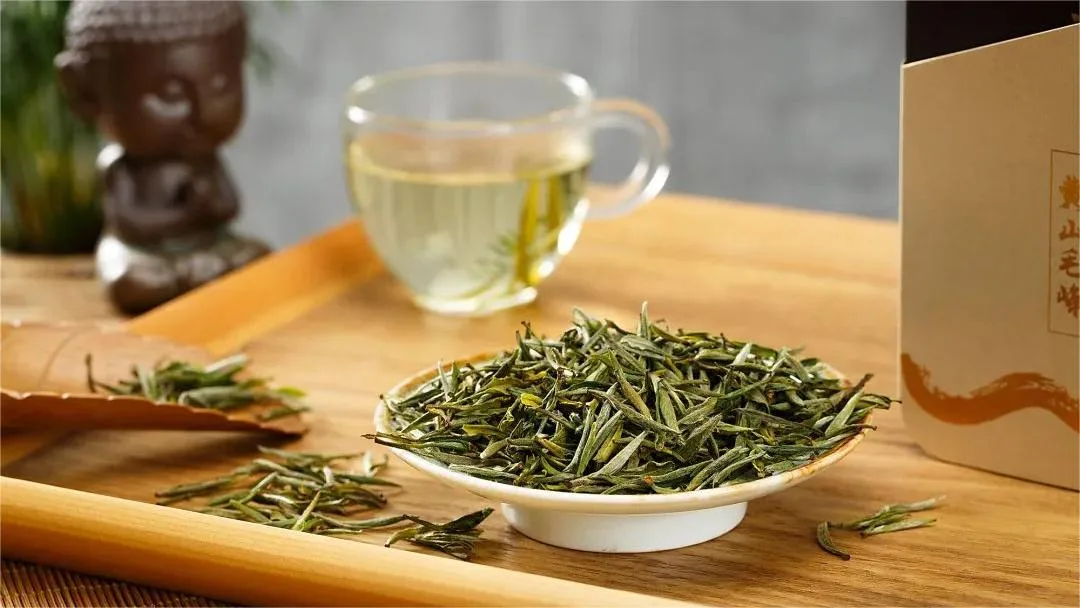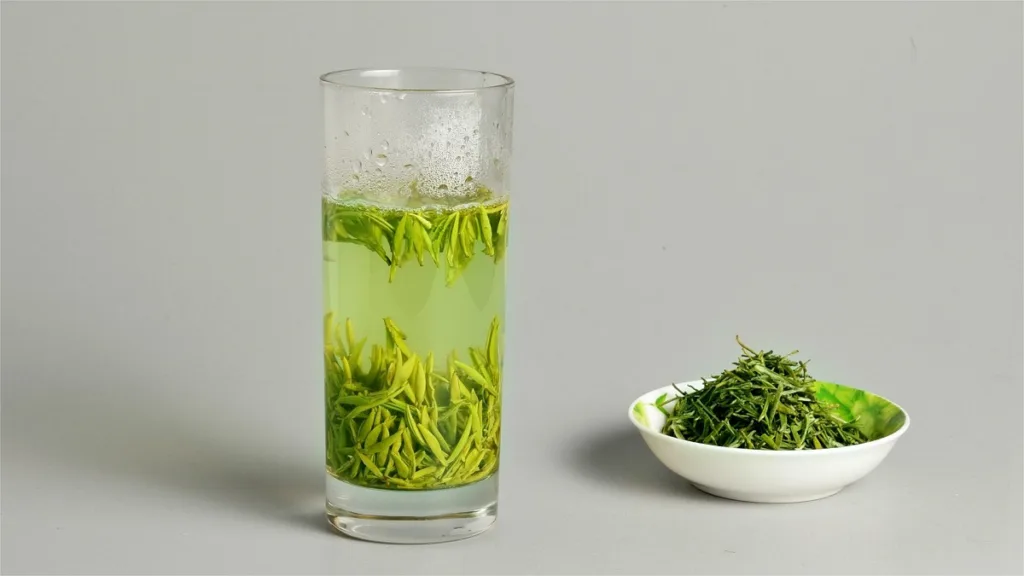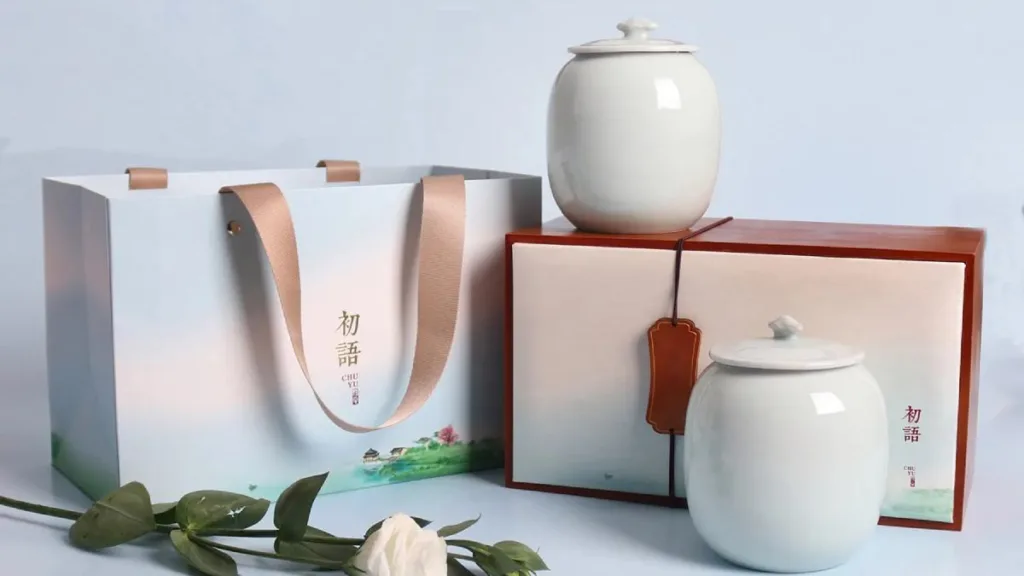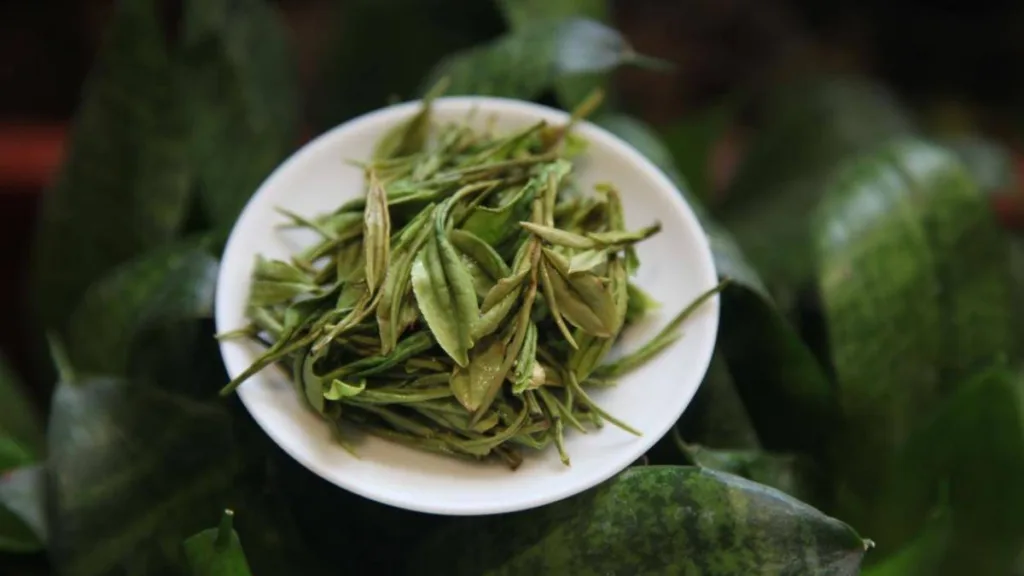Chinese green tea, known as “lǜchá” (绿茶) in Mandarin, is a type of tea with a rich cultural history and distinctive characteristics. Belonging to the Camellia sinensis plant of the Theaceae family, it is typically produced from the fresh leaves or buds of the tea plant. The process involves steps such as wilting, shaping, and drying to create a tea that maintains the natural essence of the fresh leaves. The resulting appearance is natural and vibrant, with a bright green color that gives the tea its name.
The cultivation of green tea is widespread in various regions of China, including Henan, Guizhou, and Zhejiang, and it is also cultivated in countries like Japan, Thailand, North Korea, and South Korea. Green tea plants thrive in moist and warm environments, preferring fertile and well-drained, slightly acidic soils. They are sensitive to excessive sunlight, high temperatures, and humidity. Propagation methods for green tea include both seed planting and cutting propagation, with the latter being the more commonly used method.
Chinese green tea holds a significant place in the country’s history, being the earliest type of tea documented in historical records. As early as the Tang Dynasty, the method of steaming to produce green tea became popular in China, later spreading to Japan and various other countries. During the Ming Dynasty, a technique known as pan-frying was invented, further contributing to the diversity of green tea production methods.
Characterized by its slender and pointed leaves, smooth surface, and small white flowers with a polygonal shape, green tea undergoes a flowering period from October to February of the following year. Its dried leaves exhibit a green color, and when brewed, the tea liquor reveals a brilliant jade green hue, while the tea leaves themselves remain a lush green.
Beyond its historical significance, Chinese green tea is celebrated for its exceptional fragrance, long-lasting flavor, and unique appearance. It stands out as the most abundant tea variety in China, boasting a wide range of cultivars and a multitude of renowned teas. Not only cherished for its taste, green tea also holds considerable artistic and aesthetic value, making it a cultural symbol deeply embedded in the tea traditions of China.
Manufacturing Process
The manufacturing process of Chinese green tea involves three crucial steps: withering, rolling, and drying, with withering being the key determinant of the tea’s quality. These steps are essential for shaping the physical and chemical characteristics that define the unique qualities of green tea.
Withering, or “杀青” (shāqīng), plays a decisive role in determining the quality of green tea. Through the application of high temperatures, the enzymes in the fresh leaves are inactivated, preventing the oxidation of polyphenols and the reddening of the leaves. Simultaneously, a portion of the moisture within the leaves evaporates, rendering the leaves softer and creating favorable conditions for the subsequent rolling process. As the water evaporates, low-boiling-point aromatic substances with a grassy scent in the fresh leaves volatilize, thereby enhancing the aroma of the tea.
Rolling, or “揉捻” (róuniǎn), is a step in shaping the appearance of green tea. By applying external force, the leaves are rolled and twisted, reducing their volume and facilitating brewing. This process also causes some tea juice to exude and adhere to the leaf surface, contributing to an increase in the concentration of the tea’s flavor. Rolling can be classified into cold rolling and hot rolling. Cold rolling involves rolling leaves that have been cooled after withering, while hot rolling occurs without cooling. Tender leaves are suitable for cold rolling to maintain a bright yellow-green color in the soup and a tender green color on the leaf bottom, while older leaves are better suited for hot rolling to enhance strip cohesion and reduce breakage.
Drying, or “干燥” (gānzào), serves the purpose of evaporating moisture, shaping the appearance, and fully developing the tea’s aroma. There are three main drying methods: baking, pan-frying, and sun-drying. The drying process for green tea typically involves initial baking followed by pan-frying. After rolling, the tea leaves still retain a high moisture content. If subjected to direct pan-frying, the leaves may quickly form clumps in the pan, with tea juice easily adhering to the pan’s surface. Therefore, the tea leaves undergo an initial baking to reduce the moisture content to the level required for pan-frying, ensuring a smooth and effective final drying process.
Varieties of Chinese Green Tea
Chinese green tea boasts a rich tapestry of varieties, each with its unique characteristics and regional nuances. From the renowned Biluochun to the exquisite Taiping Houkui, these teas reflect the diverse geography and climates of China, resulting in a spectrum of flavors, aromas, and appearances.
Biluochun (碧螺春)
Origin: Biluochun hails from Dongting Mountain in Wu County, Jiangsu Province. It dates back to the Ming Dynasty and gained widespread recognition during the Qing Dynasty’s rule in southern China.
Characteristics: Recognized for its slender, coiled leaves adorned with silver-white fuzz, Biluochun exhibits a pronounced fragrance and a rich, mellow taste. The infusion yields a vivid emerald-green hue, while the tender leaves at the bottom remain bright green. Its nickname “One Bud, Three Leaves” signifies the tea’s excellence in color, fragrance, and taste. Biluochun is esteemed for its beautiful appearance, vibrant color, intense fragrance, and mellow taste.
Emei Mountain Tea (峨眉山茶)
Origin: Emei Mountain tea is cultivated in the high-altitude regions of Emei Mountain, Sichuan Province, ranging from 800 to 1500 meters. Varieties include Zhuyeqing and Emei Snow Buds.
Characteristics: The tea leaves are flat, smooth, straight, and pointed, with a refreshing and aromatic fragrance. The liquor is tender green and bright, offering a clear and elegant taste. The leaves at the bottom are tender and evenly green.
Gou Gu Nao (狗牯脑)
Origin: Gou Gu Nao tea is produced in Gou Gu Nao Mountain, Suichuan County, Jiangxi Province, nestled in the Luoxiao Mountains.
Characteristics: Gou Gu Nao tea is processed from locally grown small-leaved tea plants. Harvested around Qingming, it undergoes meticulous processing, resulting in tightly rolled and well-shaped leaves. The tea has a compact and elegant appearance, revealing white fuzz. It exudes a high and graceful fragrance with floral notes, presenting a clear and bright liquor. The taste is mellow, and the leaf base is yellow-green.
West Lake Longjing (西湖龙井)
Origin: West Lake Longjing, a pan-fired green tea, is produced in the mountains surrounding West Lake in Hangzhou, Zhejiang Province.
Characteristics: Longjing tea is known for its flat, straight leaves with a slight yellowish-green color. The tea’s distinctive flattened shape, clear and bright liquor, and delicate leaf base contribute to its reputation as one of China’s most famous teas. It is characterized by a combination of green color, rich fragrance, sweet taste, and beautiful appearance.
Enshi Yulu (恩施玉露)
Origin: Enshi Yulu is cultivated in the southern part of Enshi City, Hubei Province, specifically in the Bajiao Township and the eastern foothills of Wufeng Mountain.
Characteristics: Enshi Yulu, originating in the Kangxi era of the Qing Dynasty, is renowned for its tightly rounded appearance, green color, and jade-like white fuzz. The tea has a fresh and pleasant aroma, a clear and bright liquor, and a mellow and refreshing taste. It is recognized for its exquisite shape, vibrant color, and delightful fragrance.
Huangshan Maofeng (黄山毛峰)
Origin: Huangshan Maofeng, a pan-fired green tea, is grown in the Huangshan region of Anhui Province.
Characteristics: Recognized as a top-grade Maofeng tea, it resembles sparrow’s tongue with even and robust leaves, golden-yellow veins, and a fresh, lingering aroma. The tea has a clear and bright liquor, a mellow and refreshing taste, and a tender yellow leaf base. “Golden leaves” and “ivory color” are two defining features of Huangshan Maofeng.
Liuan Guapian (六安瓜片)
Origin: Liuan Guapian is produced in the mountainous areas surrounding Liu’an City in Anhui Province.
Characteristics: Known as one of China’s top ten famous teas, Liuan Guapian is characterized by its unique appearance resembling melon seeds. The tea is famous for its refreshing taste, sweet aroma, and unique leaf shape. It is processed without buds or stems, resulting in flat, thin, and smooth leaves.
Taiping Houkui (太平猴魁)
Origin: Taiping Houkui is cultivated in Monkey Pit Village, Taiping County, Anhui Province.
Characteristics: Recognized by its distinct appearance of two leaves embracing a single bud, Taiping Houkui has a flat, straight, and natural shape. It features a white fuzz, known as “red silk threads,” and exudes a floral and brisk fragrance. The tea has a clear green liquor, a mellow and sweet taste, and a tender and evenly bright leaf base.
Xinyang Maojian (信阳毛尖)
Origin: Xinyang Maojian is grown in the Cheyun Mountains near Xinyang City, Henan Province.
Characteristics: Xinyang Maojian is known for its thin, tight, and straight leaves with a green color and prominent white fuzz. The tea produces a clear and bright green liquor, exudes a fresh and high fragrance, and has a mellow and refreshing taste. The leaves at the base are tender and evenly green.
Rizhao Green Tea (日照绿茶)
Origin: Rizhao Green Tea is produced in Rizhao, Shandong Province, the northernmost green tea producing region in China.
Characteristics: Due to the significant temperature difference between day and night in the region, Rizhao Green Tea grows slowly, resulting in a unique quality. The tea is known for its thick leaves, strong taste, high fragrance, and ability to withstand multiple infusions. It is hailed as the “Number One Tea North of the Yangtze River.”
Mengding Ganlu (蒙顶甘露)
Origin: Mengding Ganlu, China’s oldest famous tea, is grown on Mengding Mountain in Sichuan Province, the birthplace of Chinese tea culture.
Characteristics: Mengding Ganlu features tightly compacted leaves with abundant silver buds, presenting a tender green color. It has an aromatic and fresh fragrance, a clear and bright liquor, a mellow and sweet taste, and finely shaped leaves. The infusion exhibits a light green, glossy appearance.
Nanjing Yuhua Tea (南京雨花茶)
Origin: Yuhua Tea, a specialty of Nanjing, is named after Yuhua Tai outside Zhonghua Gate.
Characteristics: Yuhua Tea is known for its excellence in color, fragrance, taste, and shape. After brewing, the tea exhibits a bright green and clear color, a delicate and elegant aroma, a mellow and thick taste, and a sweet aftertaste. Yuhua Tea is reputed for its ability to quench thirst, clear the mind, aid digestion, relieve asthma, eliminate phlegm, and reduce greasiness. The tea leaves are shaped like pine needles, finely rolled, and evenly green.




